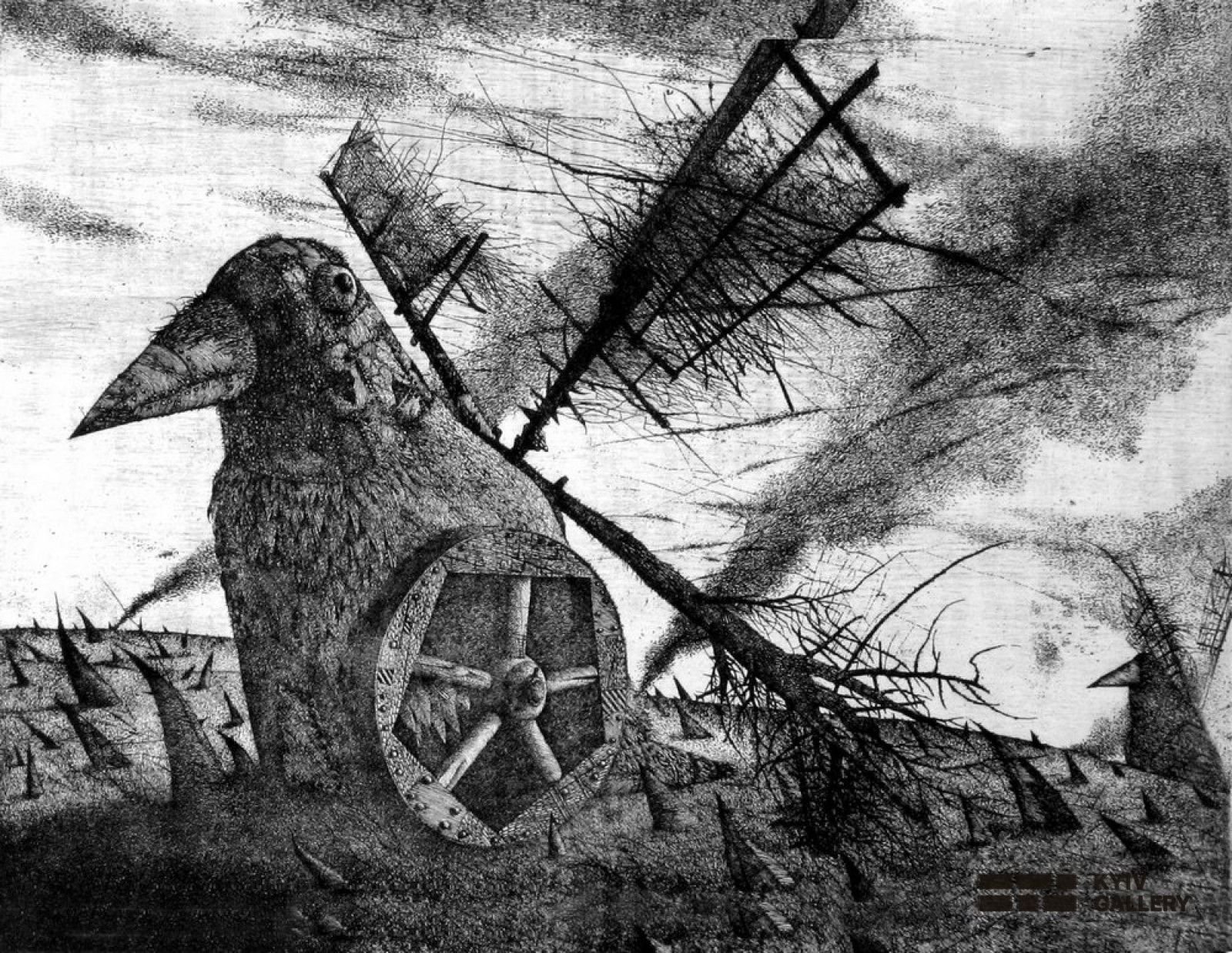

Realism is a trend in the fine arts, architecture, and literature, whose representatives proclaimed the desire to faithfully reproduce reality as the main principle of their work. Despite the considerable, by the standards of art history, and age, it still retains its relevance, and its artistic language is used by masters worldwide.
History of origin and development
Realism as a direction of painting emerged in the mid-19th century in France on the general fatigue of romantic idealization of heroes of legends and myths. Another factor that influenced the demand for new art was the invention of the camera. Exact copies of the surrounding world on photo paper challenged the masters and their ability to work with color and form. In addition to a specific artistic language from romanticism, the new direction differed in the canon of favorite themes. The attention of artists was drawn to actual historical events: critical public events and scenes from the lives of ordinary people. In their desire to convey to the audience the reality in its entirety, artists broke the traditional canons of painting. For example, the first paintings in the style of realism caused a flurry of criticism for depicting dirty heels or stains on clothes: for the public of the first half of the 19th century, this was considered vulgar and offensive.
The famous artist Gustave Courbet was one of the first to speak about realism as an original art direction. Before him, paintings were also created realistically, but single experiments could not give life to a new aesthetic concept. In 1855, Gustave Courbet presented a program document of a new direction called "Manifesto of Realism" and held an exhibition of works in the "Pavilion of Realism." Despite scandals and criticism, the artist soon managed to gather students around him and begin the full implementation of the project of new art. Communicating with like-minded people, the master often repeated that the artist's task is not to imitate what has already been made but to depict what he sees and feels on canvas.
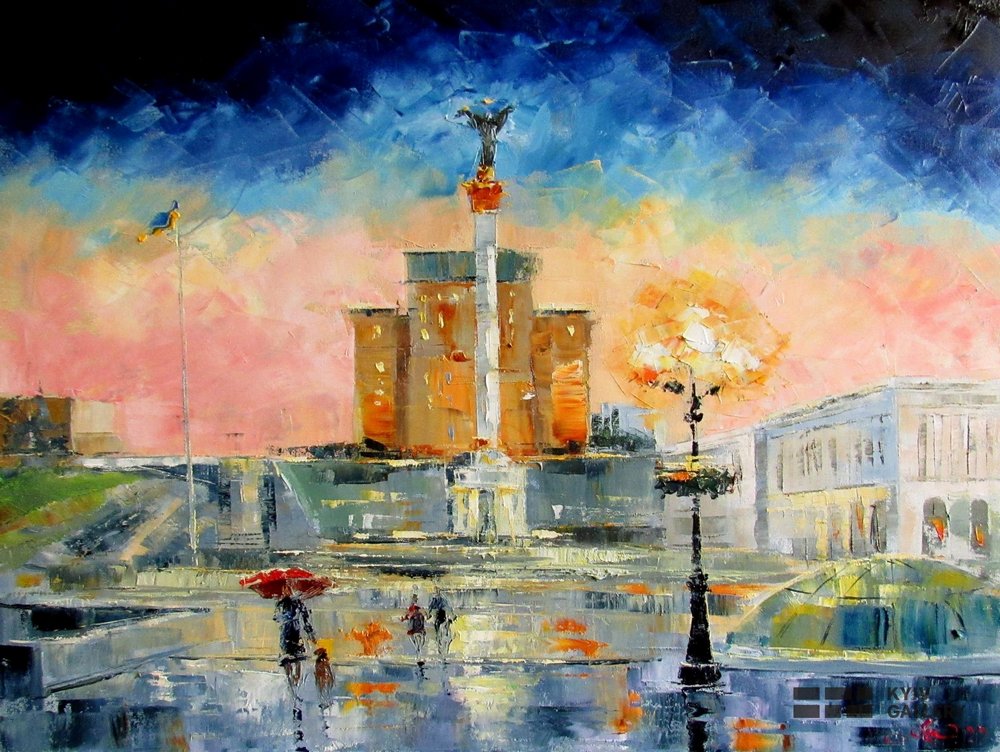
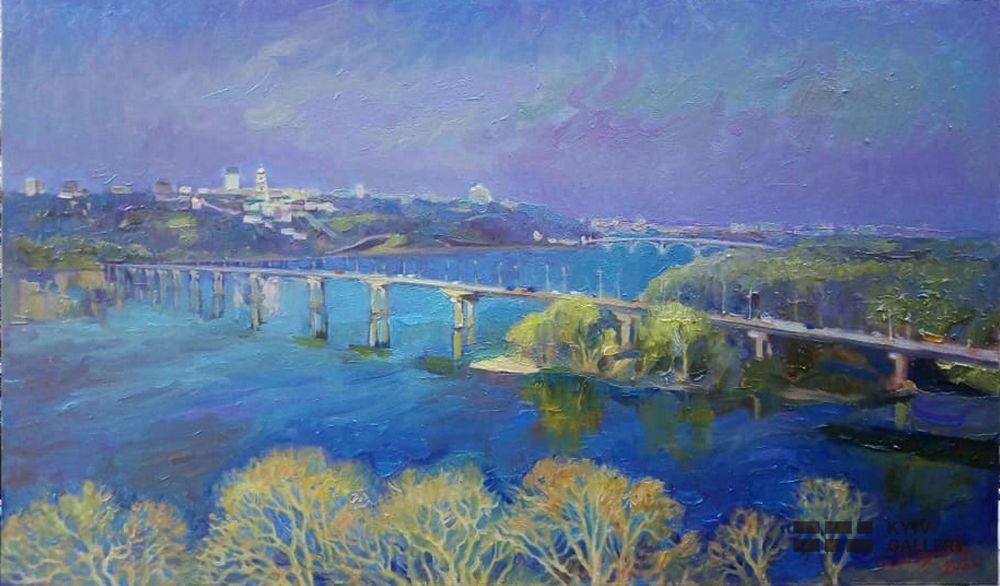
Anna Kolos, painting "Evening on Maidan", ID 14616 and Dariia Dobriakova, painting "Spring over the Dnieper", ID 14458
After the successes of Courbet and his friend Edouard Manet, the fashion for realism began to spread first in Europe and then in the United States. Its famous representatives, Ben Shahn, Jack Levine, and Jacob Lawrence, actively used satirical techniques in their work to ridicule vices and stereotypes. In America, the ideas of realism fell on fertile ground in the 20s and 30s, when ordinary Americans, tired of the bustle of the city during industrialization, sought solace in simple pleasures. To satisfy the public's desire, artists began to paint scenes from everyday life while simultaneously comprehending social problems through their prism. Thus was born a new trend - social realism.
In the USSR, the concept of realism was significantly reworked for the needs of state propaganda. As a result, the so-called socialist realism appeared - the official style of the fine art of the socialist state, designed to "protect" the Soviet citizen from the "pernicious bourgeois art of the West." The state machine imposed the aesthetic concept and artistic language on artists. Therefore, there is no consensus among historians on whether socialist realism can be considered a full-fledged refined art style. As a result of the further evolution of the direction, such styles as Precisionism, hyperrealism, surrealism, neorealism, and fantastic and magical realism appeared.
For 180 years of its existence, realism has managed to inspire visionary artists to search for another reality, to give the world an artificially created state style of art, and to become the basis for the development of the author's techniques of several generations of masters. Despite this, it still has not exhausted its potential, and new varieties are expected to appear in the future.
Techniques and methods in realism
Realism is not merely a style but a meticulous approach to capturing the world as it is. Artists employing realism often use techniques such as careful observation, detailed sketching, and mastery over shading and perspective. This section can delve into the specific methods used by various realist painters, from the use of chiaroscuro to capture the interplay of light and shadow, to the layering techniques that create depth and texture. By examining the craftsmanship behind the artwork, readers can gain a deeper appreciation for the skill and dedication required to create realistic paintings.
Subgenres and movements within realism in painting
Realism in the history of art
Despite the simplicity of its concept, realism gave rise to more than ten styles that are very different from each other. At first glance, there is a massive gap between hyperrealism and social realism. Still, both are searching for their artistic language in the context of imitating reality, interpreting its essence differently. For this reason, realism is considered one of the most influential trends in contemporary art. The richness of its potential is due to the internal ambiguity of the concept of reality. We do not perceive reality as it is, so there will always be space for its creative development through the means of fine art.
Realism in painting is far from a monolithic style. It has given birth to various subgenres and movements that have enriched its texture and contributed to its enduring appeal.
- Social Realism: This movement sought to shine a light on social injustices and the struggles of the working class. Artists like Käthe Kollwitz and Diego Rivera used realism to portray poverty, inequality, and social strife, providing a visual commentary on societal issues.
- Hyperrealism: Emerging in the late 20th century, hyperrealism takes realism to an extreme, creating paintings that are so detailed and lifelike that they often resemble high-resolution photographs. Artists like Chuck Close and Audrey Flack have been key figures in this movement, showcasing an extraordinary level of skill and precision.
- Regionalism: This American realist modern art movement focused on scenes from rural life, often portraying the local culture and landscapes. Artists like Grant Wood and Thomas Hart Benton represented everyday life in their respective regions, capturing the spirit and character of the places they called home.
- Magic Realism: Blending elements of fantasy with realistic techniques, magic realism creates a world where the ordinary is imbued with a sense of wonder and mystery. Artists like Frida Kahlo and Carel Willink exemplify this style, where the mundane meets the magical.
- Photorealism: Closely related to hyperrealism, photorealism involves recreating photographs with such accuracy and detail that the paintings often look like the photographs themselves. Richard Estes and Robert Bechtle have been at the forefront of this movement, pushing the boundaries of what is possible with paint.
- Scientific Realism: This subgenre emphasizes accuracy and detail in depicting scientific subjects. From botanical illustrations to anatomical studies, artists like Ernst Haeckel and Leonardo da Vinci have contributed to this intersection of art and science.
Criticisms and controversies
Realism's unfiltered portrayal of reality has often been both lauded and criticized. It faced resistance from traditionalists who believed in the idealized representations of the classical era. Some critics argue that realism lacks imagination, limiting artists to mere replication rather than creation. However, proponents of realism counter that its value lies in the ability to portray the world authentically, thus eliciting a more profound connection with the viewer.
The most famous artworks
1. The Origin of the World (1866). Due to its scandalous content, Gustave Courbet's painting was constantly subjected to various restrictions. But if in the Victorian era it was refused to be shown to the public in museums and galleries, today part of the canvas is partially covered with filters. The painting depicts the crotch of an unknown model. According to one version, the Turkish diplomat Halil Bey commissioned the art piece, known for his love of realistic images of the female body. In the mid-20th century, the canvas came to the psychoanalyst Jacques Lacan, who kept the work in a double frame in his country house. The scandalous painting was covered with a landscape of the same name, which copied the contours of Courbet's work.
2. The World of Christine (1948). Andrew Wyeth's painting is dedicated to his neighbor, who suffered from an acute neurological disease. Despite the condition, which fettered her body with paralysis, she did without outside help and care. Because of her illness, she was forced to lead an ascetic existence without losing her strength of spirit and desire to live on.
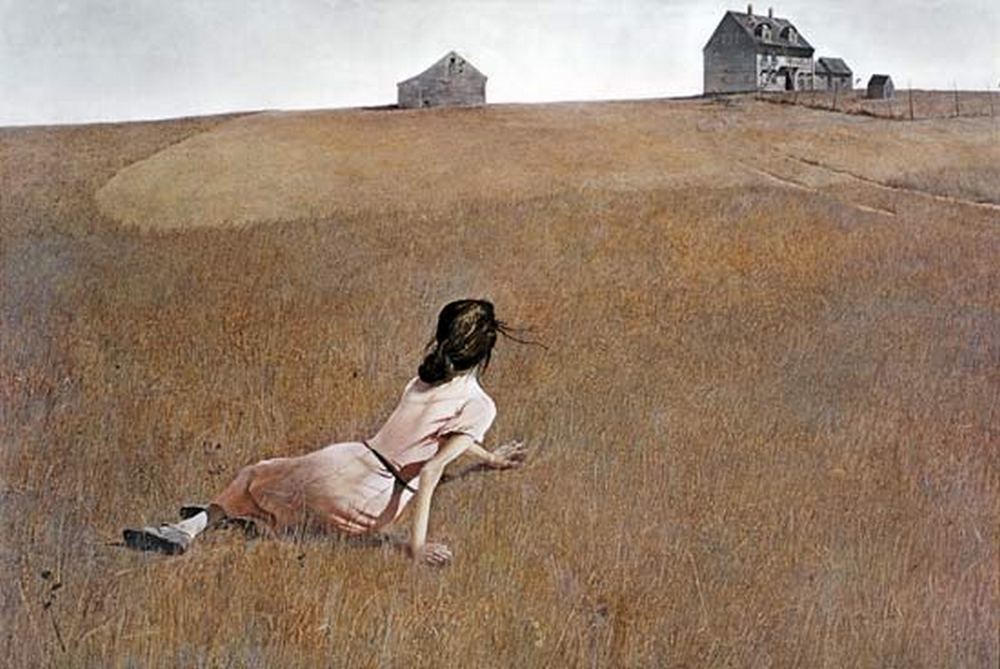
"The World of Christine" Andrew Wyeth. Photos © ru.wikipedia.org
Wyeth painted several portraits of Christina against the backdrop of Maine's northern nature.
3. Winter morning after rain, Gardeners Creek (1885). The rural landscape of Melbourne suburbs by Tom Roberts demonstrates the master's ability to work with visual effects. A fascinating artistic feature brought the artwork's popularity: a typical impressionism plot with a characteristic angle of view was painted realistically without using color blur effects. Today the work is kept in the Art Gallery of South Australia.
4. The Sower (1850). The painting by French artist Jean-François Millet is dedicated to the problem of poverty in the lower strata of European society in the mid-19th century. The tense figure of the sower emphasizes the drama of the everyday life of peasants filled with hard work. The artist hid the face of the main character, hinting to the viewer that this is a portrait of an entire era. Social issues later became one of the main themes of realism.
5. House by the railway (1925). At first glance, the canvas by Edward Hopper is a typical rural landscape. But in fact, this picture contains a deeper meaning. As you know, the beginning of the twentieth century in the United States was the time of a new wave of industrialization. The traditional way of life was collapsing under the pressure of urbanization and the construction of new transport infrastructure. For many citizens, such rapid changes became a personal tragedy: the familiar world was collapsing before their eyes.
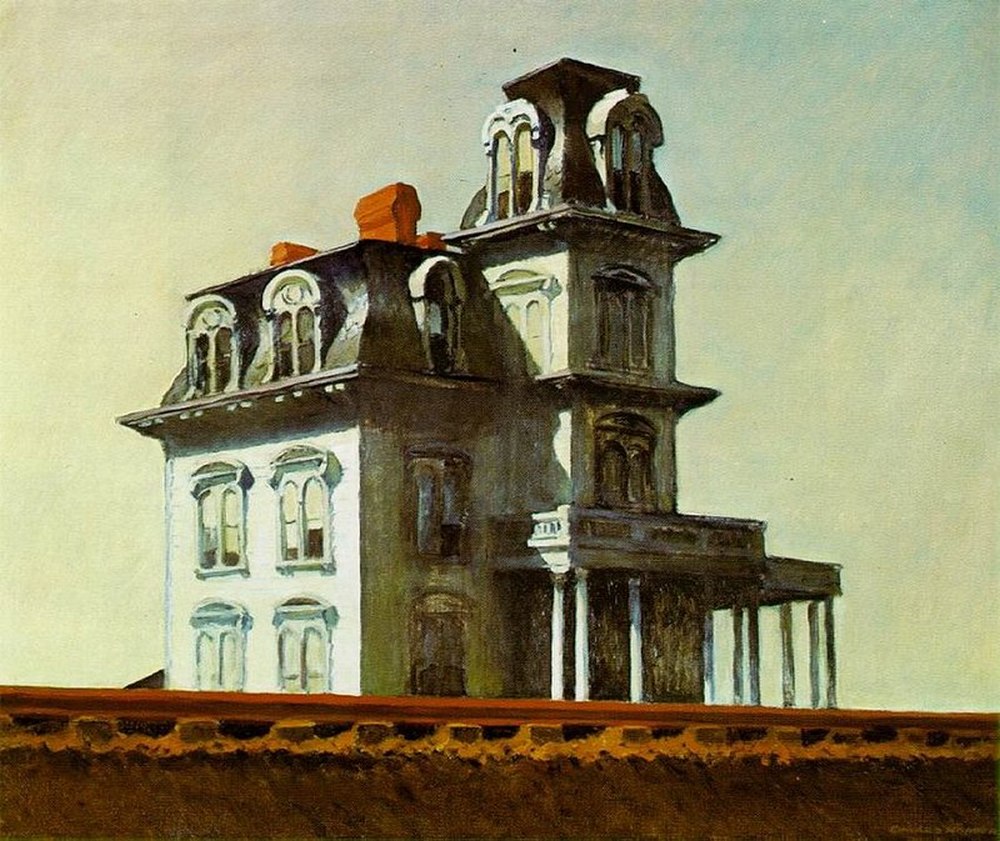
"House by the railway" Edward Hopper. Photos © ru.wikipedia.org
This tragic feeling is reflected on the canvas, where an old house built in the pre-industrial era meets the railway - a symbol of industrialization.
6. Olympia (1863). The painting by Edouard Manet was at the center of a scandal after it was shown to the public. Contemporaries accused the artist of immorality, but later his artistic language received first indulgent recognition and worldwide fame. The fact is that artists of those times were allowed to depict naked women only in the context of mythological or historical subjects. Manet neglected this tradition, displaying a naked Olympia on an unmade bed in the company of a cat and a maid.
7. Gross Clinic (1875). The work of American artist Thomas Eakins is dedicated to the famous Professor Samuel D. Gross. The canvas depicts one of the moments of a surgical operation, surrounded by medical students.
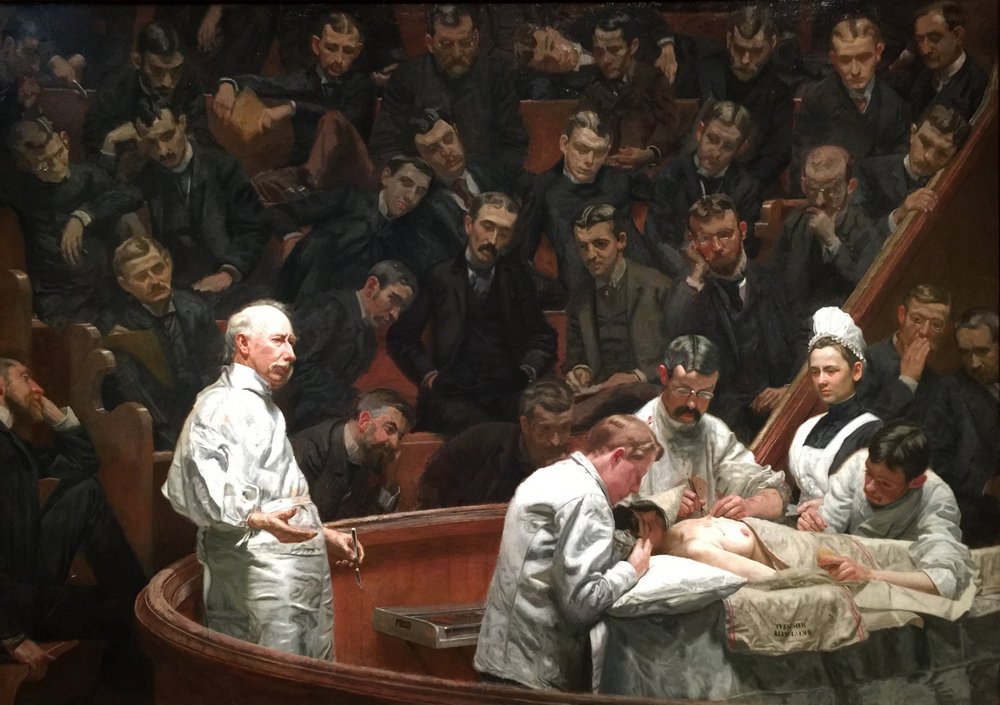
"Gross Clinic" Thomas Eakins. Photos © marketing.medsteg.ru
Today the portrait is considered one of the greatest in the American art of the 19th century, but the picture was not included in the exhibition of 1876. The reason for the refusal was the "large amount" of blood on the canvas.
Realism in contemporary art
Though born in the 19th century, realism continues to influence contemporary art in various ways. The hyperrealism movement, which emerged in the late 20th century, takes realism to a new level, often creating images that resemble high-resolution photographs. Artists like Chuck Close have achieved fame with their astonishingly detailed and lifelike portraits. Simultaneously, realism principles have been incorporated into digital art, 3D modeling, and even virtual reality, demonstrating the timeless relevance of realism in the ever-evolving art landscape.
KyivGallery art critic
